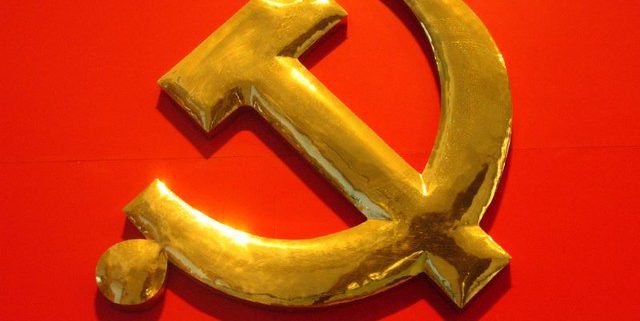Socialism and Gold
by Keith Weiner, Monetary Metals:

Most people assume that the central bank prints money when it buys bonds. They further assume that this increase in the quantity of money causes an increase in the general price level. And, this leads them to assume that the value of the money is 1 / P (P is the general price level). Therefore, when the central bank prints money to buy bonds, it is diluting the value of the money held by everyone—in proportion to the amount printed divided by the total amount in circulation.
This is not even wrong. So let’s look at how it really works.
Of course, as we’ve said many times before, the dollar is not money. It is irredeemable credit. And so is the Treasury bond. The difference between the currency and the bond is maturity. The currency is credit of zero duration and the bond has a duration of e.g. 10 years.
The Fed is not printing, but merely exchanging one irredeemable credit for another.
The Fed buys bonds from major financial institutions. When a bank sells a billion dollars’ worth of bonds for one billion dollars, it does not go out and buy consumer goods such as cars, wine, and flat-screen TVs. To think so, is to suffer from a limited imagination!
A bank has a certain cost to stay open and beyond that seeks to make a profit. Hence, a bank is obliged to buy another asset in order to earn its required yield. When the bank gives up a bond to the Fed, it is at an uptick in the price. The can pockets this little fraction as its profit, but it must buy something else. Also on the uptick.
Price is the inverse of yield. The Fed pushes up the price of the Treasury, hence down the yield. The banks push up the price of other assets, hence down their yields. The net result is that all yields fall, as the Treasury bond yield falls.
The net result is the yield on all assets is pulled down. Of course, the yields of other assets are higher than Treasury bonds, due to the risks. So yield-starved banks substitute them for Treasurys.
As an aside, a few short years ago the Narrative in the alternative finance community was inflation and, of course, rising interest rates. As we write this, the 10-year Treasury yield is now down to 1%.
Banks, in turn, are buying these assets off other institutions, corporations, funds, and even retail investors. Everyone is pushed farther out on the risk and maturity curves seeking some sort of yield. This is not the underpinnings of a healthy financial system or economy.
But our focus today is on the trend towards socialism and how this affects gold.
The falling interest rate is a trend towards socialism.
To understand why, the first key concept is Net Present Value (NPV). Suppose a company generates $1 of free cash flow every year in perpetuity. What is that worth today? It depends on the rate of interest. That is, one must discount the dollar each future year using the rate of interest. For example, if the rate of interest is 10%, then that stream of cash flow is $1 + $0.90 + $0.81 + $0.73 … = $10. However, when the interest rate drops to 5%, then the NPV is $1 + $0.95 + $0.90 + $0.86 = $20.
When the interest rate is halved, the value of a perpetual stream of income doubles.
Read More @ Monetary-Metals.com
Loading...



